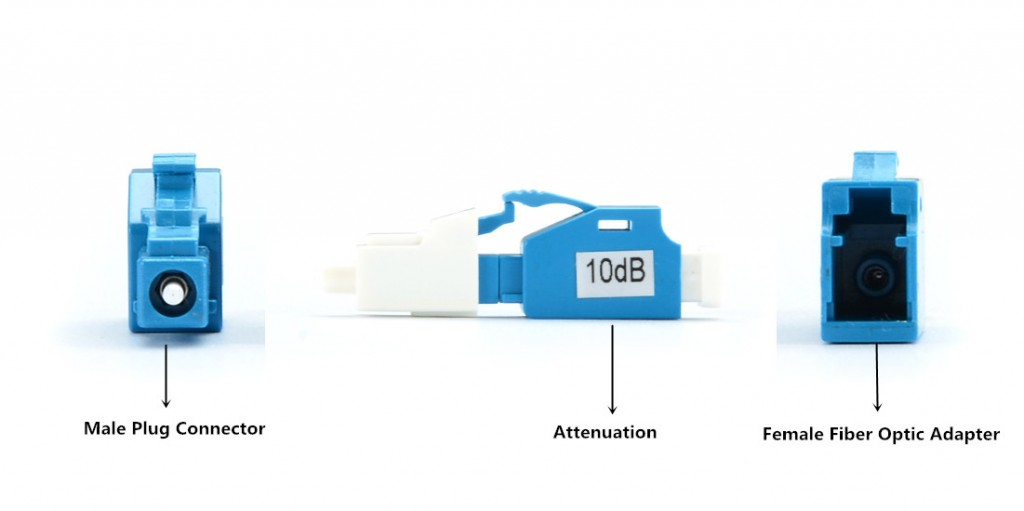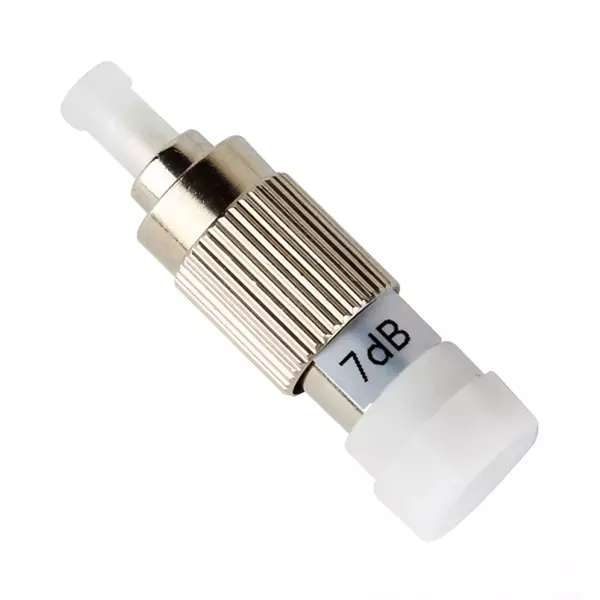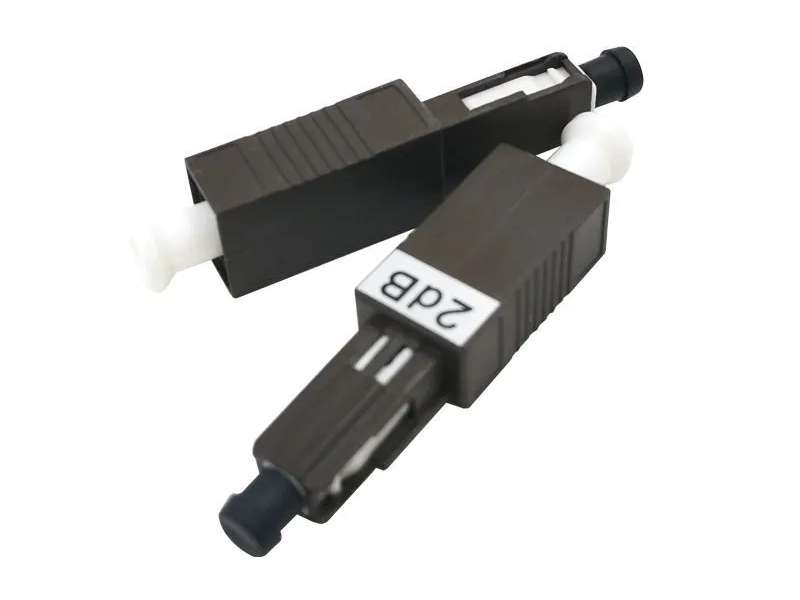Choosing the Right Optical Fiber Attenuator: Factors to Consider

Introduction to Optical Fiber Attenuators
Optical fiber attenuators play a crucial role in maintaining the integrity and performance of fiber optic networks. These devices are designed to reduce the power level of optical signals, ensuring they are within the desired range for optimal transmission. By controlling signal strength, attenuators help prevent issues such as signal distortion, overloading, or excessive loss.
Selecting the right attenuator is essential to achieve reliable network performance. Different types of attenuators are available, each with its own characteristics and applications. Understanding these options allows network professionals to make informed decisions based on their specific requirements. In the following sections, we will explore the various types of fiber optic attenuators and delve into their performance characteristics and applications.
Types of Optical Fiber Attenuators
When it comes to optical fiber attenuators, there are two main types: fixed attenuators and variable attenuators. Each type has its own unique characteristics and advantages.
Fixed Attenuators
Fixed attenuators provide a constant level of attenuation, meaning they reduce the signal power by a fixed amount. These attenuators are available in various attenuation levels, typically ranging from 1dB to 30dB. They are often used in applications where a specific level of signal reduction is required consistently.
One of the key advantages of fixed attenuators is their simplicity. They are easy to install and require no additional adjustments once set up. Additionally, fixed attenuators offer excellent stability and reliability since they do not have any moving parts that could introduce variability or wear over time.
However, the drawback of fixed attenuators is their lack of flexibility. Once installed, the attenuation level cannot be adjusted without physically replacing the attenuator. This limitation makes them less suitable for scenarios where dynamic or fine-tuned control over signal strength is necessary.
Variable Attenuators
Variable attenuators, on the other hand, provide adjustable levels of attenuation. These devices allow users to manually or electronically modify the attenuation level according to their specific requirements. Variable attenuators offer greater flexibility and precision in controlling signal strength compared to fixed attenuators.
The primary advantage of variable attenuators is their ability to adapt to changing network conditions or testing environments. They can be adjusted in real-time to compensate for varying signal power levels or different fiber lengths within a network. This versatility makes them ideal for applications that demand dynamic control over signal strength.
However, variable attenuators may introduce some additional complexity due to their adjustable nature. They require careful calibration and periodic maintenance to ensure accurate performance over time. Additionally, variable attenuators tend to be more expensive than fixed ones due to their added functionality.
Understanding the differences between fixed and variable attenuators allows network professionals to choose the most suitable option based on their specific requirements. In the following sections, we will explore the performance characteristics of attenuators and their applications in more detail.

Performance Characteristics of Attenuators
Attenuators have specific performance characteristics that are important to consider when selecting the right one for your network. Two key performance metrics to understand are insertion loss and return loss.
Insertion Loss
Insertion loss refers to the reduction in signal power caused by the insertion of an attenuator into a fiber optic link. It is crucial to minimize insertion loss to maintain signal strength and prevent data transmission issues. Factors that can influence insertion loss include the quality of connectors, alignment between fibers, and any imperfections or misalignments within the attenuator itself.
To mitigate insertion loss, it is essential to choose high-quality attenuators with well-polished connectors and precise alignment. Additionally, ensuring proper installation techniques, such as cleaning and inspecting connectors before installation, can help minimize losses.
Return Loss
Return loss measures the amount of reflected light at the point where an attenuator is inserted into a fiber optic link. High return loss can lead to signal reflections that interfere with network performance. It is crucial to minimize return loss for optimal signal transmission and reduced signal degradation.
Measuring return loss requires specialized equipment such as an optical time-domain reflectometer (OTDR) or a reflectance meter. These tools allow technicians to assess the amount of reflected light accurately. To improve return loss, techniques such as using high-quality connectors, ensuring proper connector mating, and maintaining clean fiber end faces are recommended.
Understanding these performance characteristics helps network professionals make informed decisions when selecting attenuators for their specific applications. In the following sections, we will explore various applications where fiber optic attenuators play a vital role in maintaining network performance.
Applications of Fiber Optic Attenuators
Fiber optic attenuators find widespread use in various applications, including telecommunications and data centers. Let's explore the role of attenuators in these two critical environments.
Telecommunications
In telecommunications networks, attenuators play a crucial role in ensuring proper signal transmission and preventing issues such as overloading or excessive signal loss. They are commonly used in scenarios where there is a significant disparity between the transmitter power and receiver sensitivity. Attenuators help balance the signal strength to ensure optimal performance and prevent damage to sensitive components.
Specific applications where attenuators are necessary include long-haul fiber links, optical transceivers, and network testing environments. In long-haul links, attenuators are used to compensate for signal degradation over extended distances. Optical transceivers often require attenuators to match their output power with the receiving equipment's input requirements. Additionally, during network testing and troubleshooting, attenuators allow technicians to simulate real-world conditions by introducing controlled levels of attenuation.
Data Centers
In data center environments, fiber optic attenuators play a vital role in maintaining reliable network connections. They are particularly important when connecting devices with different power budgets or when dealing with short-reach links that require precise control over signal strength.
Examples of situations where attenuators are used in data centers include connecting high-power transmitters to low-power receivers, managing link budgets within specified limits, and ensuring compatibility between different types of optical modules. Attenuators enable data center operators to optimize signal levels for efficient data transmission while minimizing errors or disruptions caused by excessive or insufficient power levels.
By understanding the specific requirements of telecommunications networks and data centers, network professionals can make informed decisions about incorporating fiber optic attenuators into their infrastructure. In the following sections, we will delve into key factors that should be considered when selecting an appropriate attenuator for your specific needs.

Factors to Consider when Selecting an Attenuator
When selecting an optical fiber attenuator, there are two key factors to consider: attenuation level and connector type. Let's explore these factors in more detail.
Attenuation Level
The attenuation level refers to the amount of signal power reduction required in a specific application. It is crucial to determine the appropriate attenuation level based on the network requirements and desired signal strength. Different applications may have varying attenuation needs, so understanding the specific requirements is essential.
Considerations for matching the attenuation level to network requirements include evaluating the distance between devices, power budgets of transmitters and receivers, and any other factors that may affect signal strength. It is important to choose an attenuator with an attenuation level that aligns with these requirements to ensure optimal performance.
Connector Type
Optical fiber attenuators come in various connector types, such as SC, LC, ST, or FC connectors. Understanding different connector types and their compatibility is crucial when selecting an attenuator for seamless integration into existing network infrastructure.
It is essential to ensure that the connector type of the attenuator matches the connectors used in the network components it will be connected to. Mismatched connectors can lead to signal loss or poor connections. By selecting the right connector type, network professionals can ensure smooth integration without any compatibility issues.
Considering both attenuation level and connector type when selecting an optical fiber attenuator allows for optimal performance and compatibility within a network environment. In the next section, we will summarize the key factors discussed throughout this blog post and emphasize the importance of choosing the right attenuator for optimal network performance.
Conclusion
In conclusion, selecting the right optical fiber attenuator is crucial for achieving optimal network performance. Key factors to consider include the attenuation level and connector type. The attenuation level should be chosen based on specific application requirements, ensuring the signal strength aligns with network needs. Additionally, selecting the appropriate connector type ensures seamless integration into existing infrastructure.
Choosing the right attenuator not only prevents signal distortion and loss but also ensures compatibility and reliable connections. Attenuators play a significant role in maintaining signal integrity and optimizing data transmission in telecommunications networks and data centers.
By understanding the performance characteristics of attenuators, exploring their applications, and considering key factors during selection, network professionals can make informed decisions that lead to efficient and reliable fiber optic networks.
See Also
Choosing the Right Optical Fiber Patch Cord
Choosing the Right Quick Assembly Connector: Tips and Advice
Understanding Different Types of Fiber Optic Adapters: A Comprehensive Guide
Discover the 8 Core Fiber Optic Terminal Box
Key Considerations for Choosing Field Pre-installable Connectors
About US
Follow Us
AnetFiber company's main products are indoor and outdoor optical fiber cables, outdoor waterproof pre-connected fiber-to-the-home products, PLC optical fiber splitters, optical fiber jumpers and pigtails, MTP®/MPO high-density big data product solutions, optical fiber field quick connectors and research and development molding, injection molding and production of optical fiber distribution boxes, optical fiber chassis cabinets, the market has expanded to the world, Europe, America, Asia, the Middle East and Latin America.
Address
Shenzhen City, Baoan District, Yanluo Street, Tangxiayong Community, Yangyong Industrial Road, Tonggangda New Energy Vehicle Park 406
Contacts
+86 199 2655 3586

